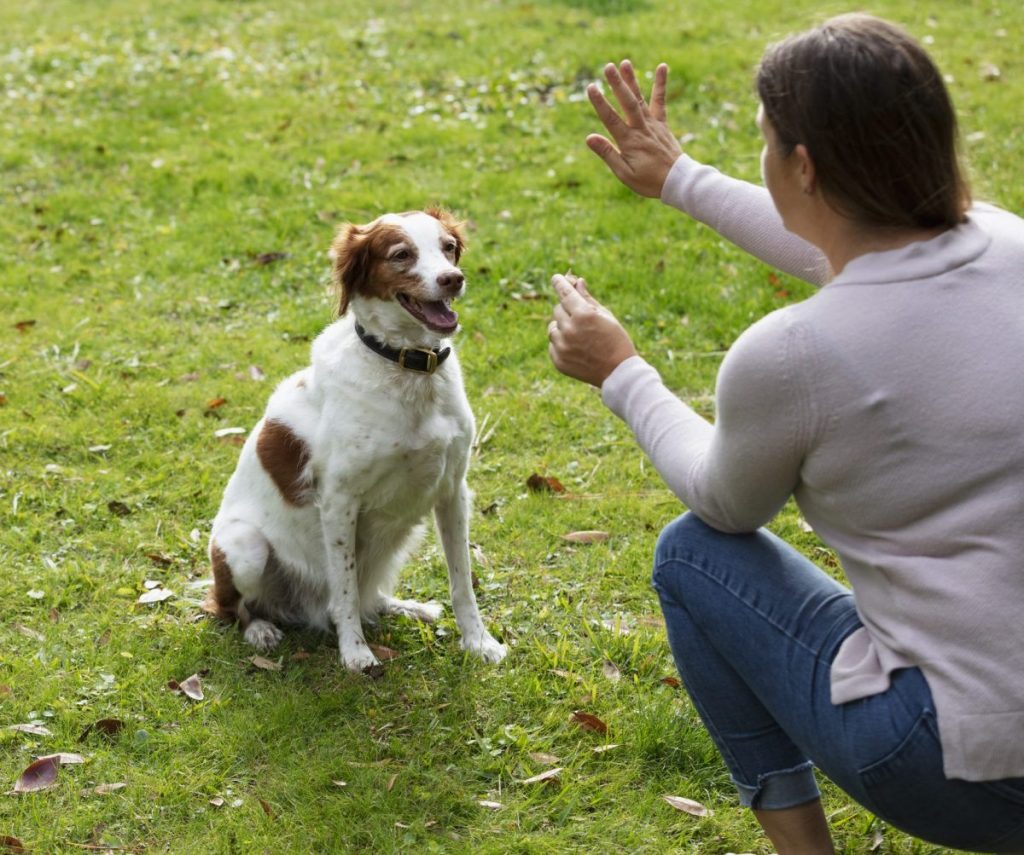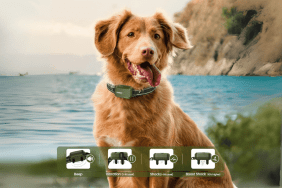Training a deaf dog may seem like a daunting task, but with the right techniques and tools, it can be a rewarding and successful experience for both you and your furry friend. While communication may require some adjustments, deaf dogs are highly intelligent and capable of learning just like any other dog. We’re going to share some effective strategies for training a deaf dog. The result? A stronger bond and a more obedient pup.
Visual communication and signals
To effectively communicate with a deaf dog, visual cues and signals become paramount. These non-verbal cues allow you to convey commands, expectations, and praise without relying on sound. Here are some key strategies to consider:
Use Clear Hand Signals: Teach your deaf dog basic commands using clear and consistent hand signals. For example, use an open palm facing upward for “sit” and a sweeping motion from nose to tail for “down.” Reinforce each command with positive reinforcement, such as treats or praise.
Incorporate Vibrations: Since deaf dogs cannot hear verbal cues, you can utilize vibrations to get their attention. Stomp your foot gently on the ground or use a handheld device that emits vibrations. Pair these vibrations with visual signals to create a strong association and grab their attention.
Visual Aids and Flashing Lights: Consider using visual aids, such as colored flags or flashing lights, to signal specific commands or actions. Attach a flag to a target stick for “touch,” or use a flashing light to signal mealtime. These visual cues help your deaf dog understand and respond appropriately.
Positive reinforcement and rewards
Positive reinforcement is a key component of training any dog, including deaf dogs. By using rewards and praise, you can motivate and reinforce desired behaviors effectively. Here are some tips for using positive reinforcement:
Treats and Food Rewards: Deaf dogs are highly food-motivated, making treats an excellent tool for training. Use small, soft treats that are easy to consume quickly, and reward your dog immediately after they perform a desired behavior. Pair the treat with a visual signal, such as a thumbs-up or a nod, to reinforce the connection between the action and the reward.
Verbal Cues through Body Language: Although deaf dogs can’t hear your voice, they can still pick up on your body language and facial expressions. Use a smile, a happy tone of voice, or an enthusiastic gesture to convey positive reinforcement and show your dog they’ve done well.
Play and Affection: Incorporate play and affection into training sessions to create a positive and enjoyable experience. Engage in games, such as tug-of-war or fetch, and shower your dog with both praise and petting when they respond correctly to commands. This strengthens the bond between you and your deaf dog while reinforcing their willingness to learn.
Training tools for deaf dogs
Several training tools can assist in effectively training a deaf dog. These tools provide additional support and aid in communication. Here are a few options to consider:
Vibrating Collars: Vibrating collars are designed specifically for deaf dogs. These collars emit vibrations as a form of communication or to get your dog’s attention. You can use the vibrations as a cue for specific commands or as a signal to redirect your dog’s attention.
Visual Clickers: Replace traditional clickers with visual clickers that produce a visible flash or light. Pair the flash with a treat or reward to reinforce positive behavior. Visual clickers are a valuable tool for shaping behaviors and capturing your deaf dog’s attention.
Sign Language for Dogs: Sign language for dogs involves teaching your pup specific signs for commands, actions, and behaviors. Utilize American Sign Language (ASL) or create your own signs that are easy to remember and distinguish. Consistency is key, so ensure everyone involved in training uses the same signs.
Training a deaf dog requires patience, consistency, and adaptability. By utilizing visual cues, positive reinforcement, and appropriate training tools, you can effectively communicate and build a strong bond with your furry friend. Remember, every dog is unique, so tailor your training methods to suit your deaf dog’s individual needs and abilities. With time, dedication, and understanding, you can provide your deaf dog with the guidance and training they need to thrive in the world.










